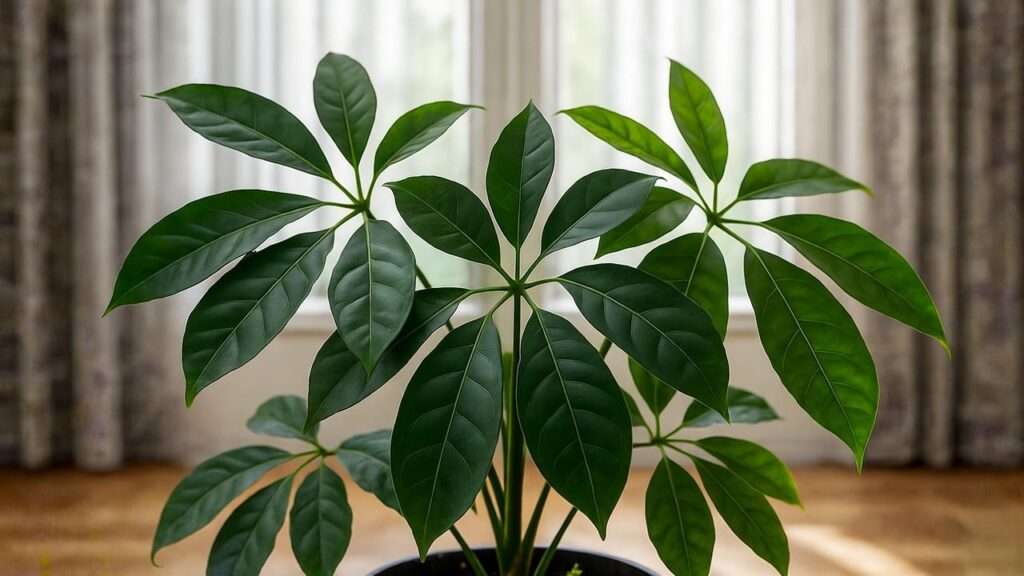Picture this: You walk into your living room, and your lush, vibrant umbrella plant is the star of the show, its glossy leaves catching the light just right. But then, you notice a few drooping leaves or a yellowing stem, and suddenly, you’re wondering, “What am I doing wrong?” Don’t worry—this umbrella plant care guide is here to transform your Schefflera from struggling to stunning! Whether you’re a seasoned plant parent or a newbie, this comprehensive guide, backed by horticultural expertise and practical experience, will empower you to keep your Schefflera thriving indoors. From light and watering to pest control and styling, we’ve got you covered with actionable tips to solve common issues and grow a healthy, happy plant. Let’s dive in! 🌞
1. Understanding the Umbrella Plant: What Makes Schefflera Special? 🌴
1.1 Origins and Characteristics
The umbrella plant, scientifically known as Schefflera, hails from the tropical regions of Australia, Southeast Asia, and the Pacific Islands. Its signature feature—radiating, glossy leaves resembling tiny umbrellas—gives it a distinctive, eye-catching look. Scheffleras are beloved for their adaptability to indoor environments, making them a staple in homes and offices. Beyond aesthetics, they’re praised for their air-purifying qualities, as noted in NASA’s Clean Air Study, which highlights their ability to remove toxins like benzene from the air. With proper care, these plants can grow into lush, vibrant displays that elevate any space.
1.2 Popular Varieties for Indoor Growing
Scheffleras come in two main varieties suited for indoor growth:
- Schefflera arboricola (Dwarf Umbrella Plant): Compact, with smaller leaves and variegated options (green or yellow-green). Ideal for tabletops or small spaces.
- Schefflera actinophylla: Taller, with larger, bolder leaves, perfect for statement pieces in spacious rooms.
Each variety has slightly different care needs, but both thrive with similar principles. For beginners, the dwarf variety is more forgiving, while the larger actinophylla suits those ready to commit to regular pruning. Expert Tip: Choose a variegated arboricola for a pop of color, but ensure it gets enough light to maintain its patterns.
2. Essential Umbrella Plant Care Requirements 🌱
2.1 Light Requirements for Optimal Growth
Light is the backbone of healthy umbrella plant care. Scheffleras thrive in bright, indirect light, mimicking their native tropical canopy environment. Place your plant near an east-facing window for soft morning sun or a north-facing window for consistent, diffused light. Direct sunlight can scorch leaves, causing brown, crispy edges, while too little light leads to leggy growth and faded foliage.
Practical Advice: If your space lacks natural light, supplement with a grow light (6500K full-spectrum bulbs work best). Rotate the plant every few weeks to ensure even growth. According to the University of Florida’s IFAS Extension, Scheffleras need at least 200-300 foot-candles of light for optimal health, so aim for bright but filtered conditions.
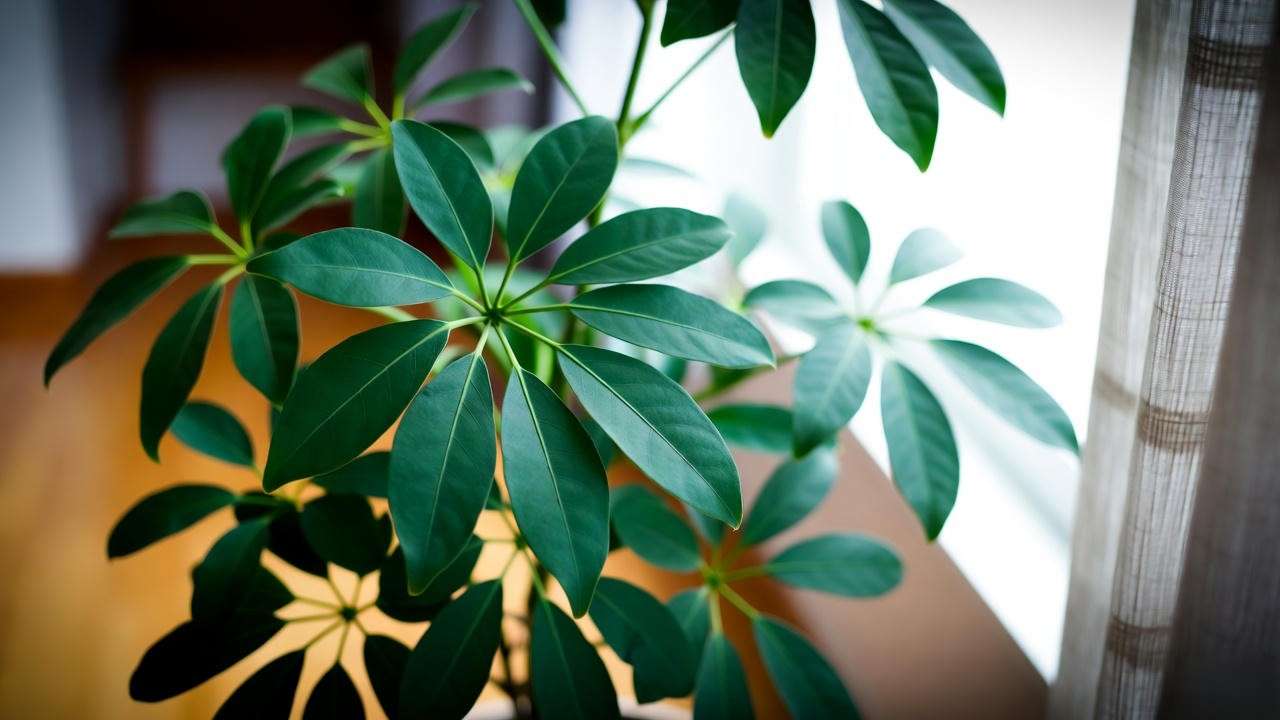
2.2 Watering Your Umbrella Plant
Watering is where many plant parents stumble. The golden rule: Let the top 1-2 inches of soil dry out between waterings. Overwatering is the leading cause of root rot, while underwatering causes leaf drop. Use your finger or a moisture meter to check soil dampness. Water thoroughly until it drains from the pot’s bottom, but never let the plant sit in standing water.
Seasonal Adjustments: In spring and summer (the growing season), water every 7-10 days. In fall and winter, reduce to every 2-3 weeks, as the plant’s growth slows. Expert Tip: Use room-temperature water to avoid shocking the roots, and ensure your pot has drainage holes to prevent soggy soil.
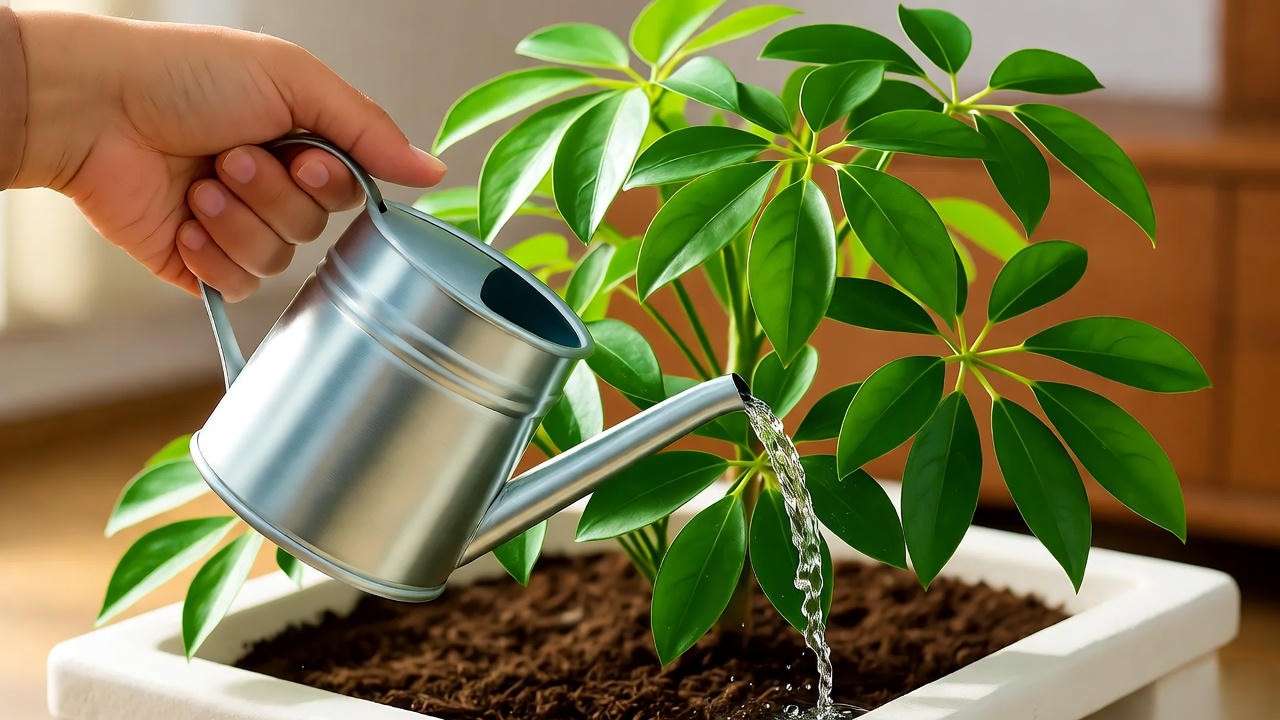
2.3 Soil and Potting Needs
Scheffleras need a well-draining, peat-based potting mix to thrive. A mix of 50% peat moss, 25% perlite, and 25% potting soil works wonders, providing aeration and moisture retention without waterlogging. Repot every 1-2 years or when roots become crowded (look for roots poking out of drainage holes or circling the pot’s base).
Repotting Guide:
- Choose a pot 1-2 inches larger in diameter than the current one.
- Gently loosen the root ball and remove dead roots.
- Add fresh soil mix, ensuring the plant sits at the same depth as before.
DIY Soil Mix: Combine 2 parts peat moss, 1 part perlite, and 1 part coarse sand for a budget-friendly, effective blend.
2.4 Temperature and Humidity Preferences
Scheffleras love warmth and humidity, reflecting their tropical roots. Keep them in a 60-75°F (15-24°C) range, avoiding drafts from air conditioners or heaters. Humidity should ideally be 40-60%, as low humidity causes leaf curling or browning.
Humidity Boosters:
- Place a pebble tray filled with water beneath the pot.
- Use a room humidifier during dry winter months.
- Group plants together to create a humid microclimate.
Caution: Sudden temperature drops below 55°F can stress the plant, leading to leaf drop. Keep it away from cold windows or exterior doors in winter.
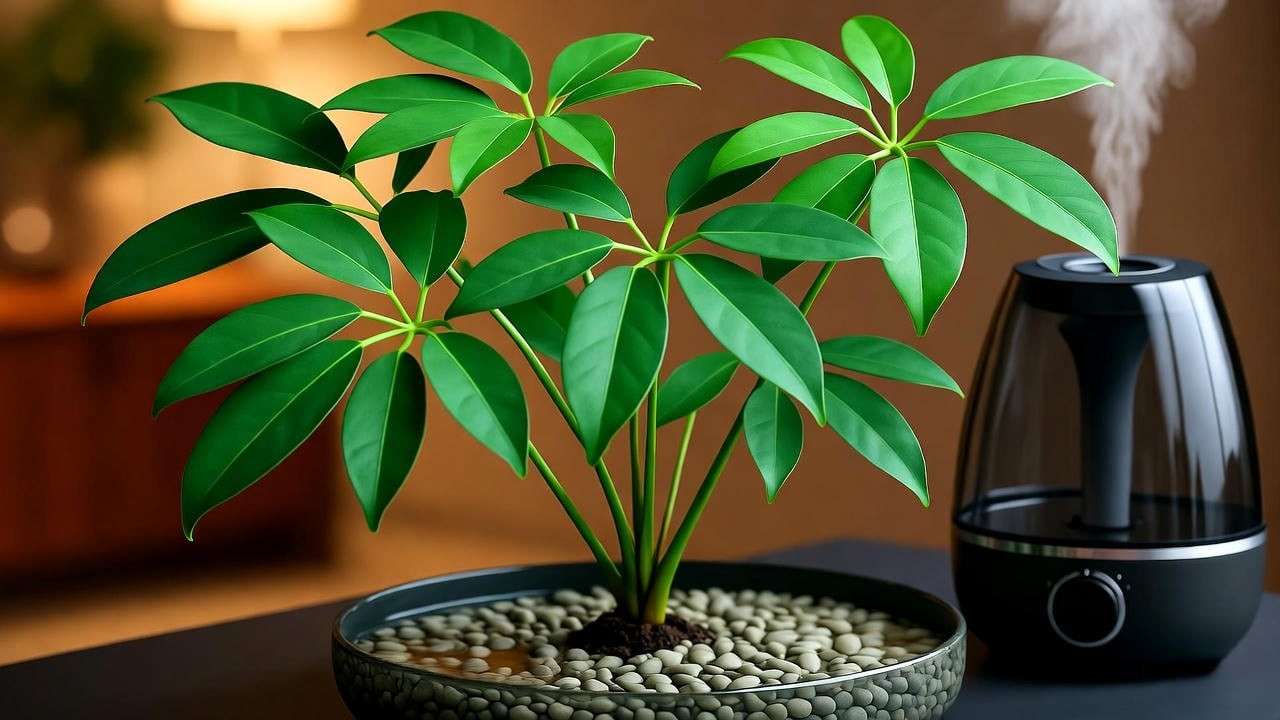
3. Advanced Care Tips for a Thriving Schefflera 🌼
3.1 Fertilizing for Healthy Growth
To fuel lush growth, fertilize your umbrella plant monthly during spring and summer with a balanced, water-soluble fertilizer (e.g., 10-10-10 or 20-20-20). Dilute to half-strength to avoid fertilizer burn, which manifests as brown leaf tips. In fall and winter, skip fertilizing, as the plant enters dormancy.
Signs of Nutrient Deficiency:
- Yellowing leaves: Possible nitrogen deficiency.
- Stunted growth: Lack of phosphorus or potassium.
Expert Tip: Organic options like fish emulsion or compost tea can work well but use sparingly to avoid odor.
3.2 Pruning and Shaping Your Umbrella Plant
Pruning keeps your Schefflera bushy and manageable. Spring is the best time to prune, as the plant is actively growing. Use clean, sharp shears to:
- Remove leggy or yellowing stems.
- Trim back overgrown branches to encourage fuller growth.
- Shape the plant for aesthetic balance.
Propagation Bonus: Cuttings (4-6 inches long with a few leaves) can be rooted in water or soil. Place in indirect light and keep soil moist for 4-6 weeks until roots form. This is a great way to expand your plant collection or share with friends!
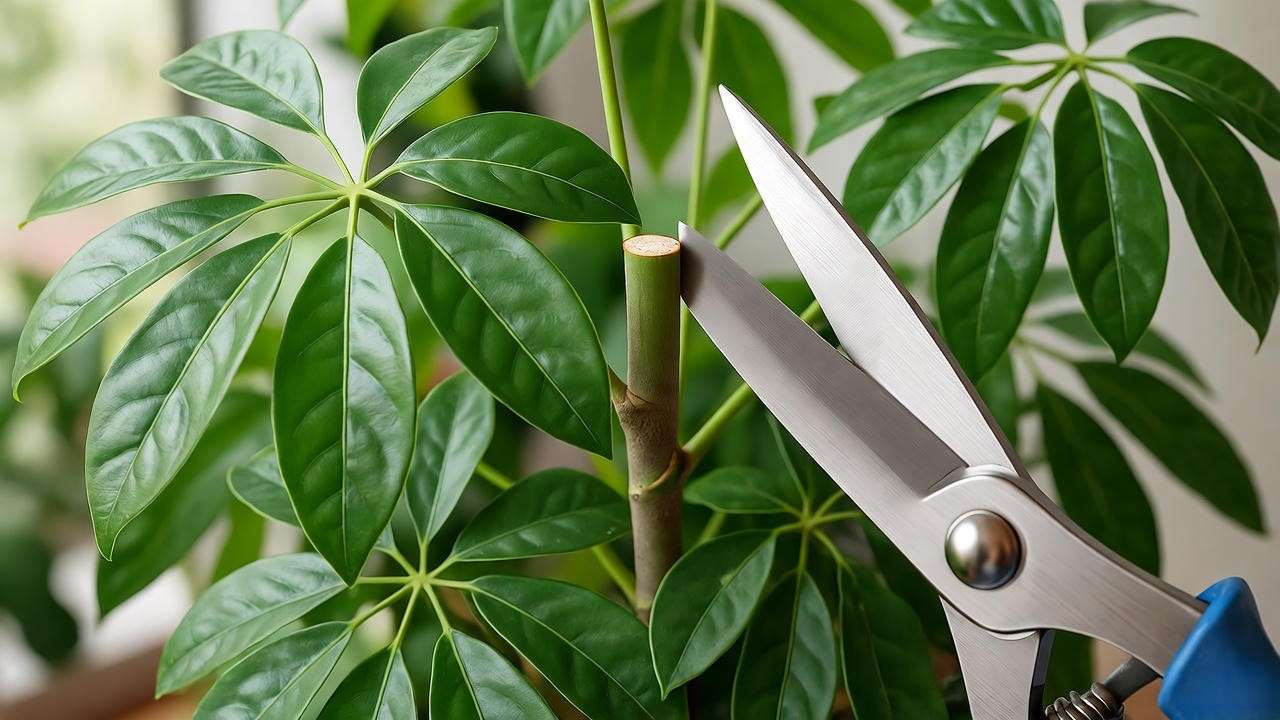
3.3 Cleaning and Maintaining Foliage
Dust on leaves blocks sunlight, hindering photosynthesis. Wipe leaves monthly with a damp, soft cloth to keep them glossy and healthy. For stubborn dirt, give the plant a gentle shower with lukewarm water. Caution: Avoid commercial leaf shine products, as they can clog leaf pores and harm the plant.
4. Common Umbrella Plant Problems and Solutions 🐛
4.1 Troubleshooting Leaf Issues
Leaf problems are a common cry for help. Here’s how to diagnose and fix them:
- Yellowing Leaves: Often caused by overwatering, poor drainage, or nutrient deficiency. Check soil moisture and adjust watering; consider a fertilizer boost.
- Drooping or Dropping Leaves: Underwatering, low humidity, or transplant shock. Ensure consistent watering and increase humidity.
- Brown, Crispy Edges: Low humidity or over-fertilization. Mist leaves or use a humidifier, and flush soil with water to remove excess fertilizer salts.
4.2 Pest Control for Schefflera
Scheffleras can attract spider mites, aphids, and scale. Spot infestations early by checking for:
- Webbing or tiny red dots (spider mites).
- Sticky residue or curled leaves (aphids).
- Small, brown bumps on stems (scale).
Organic Solutions:
- Spray with neem oil (diluted per instructions) weekly until pests are gone.
- Use insecticidal soap for mild infestations.
- Wipe leaves with a damp cloth to remove pests manually.
Prevention Tip: Maintain humidity and inspect plants weekly to catch issues early.
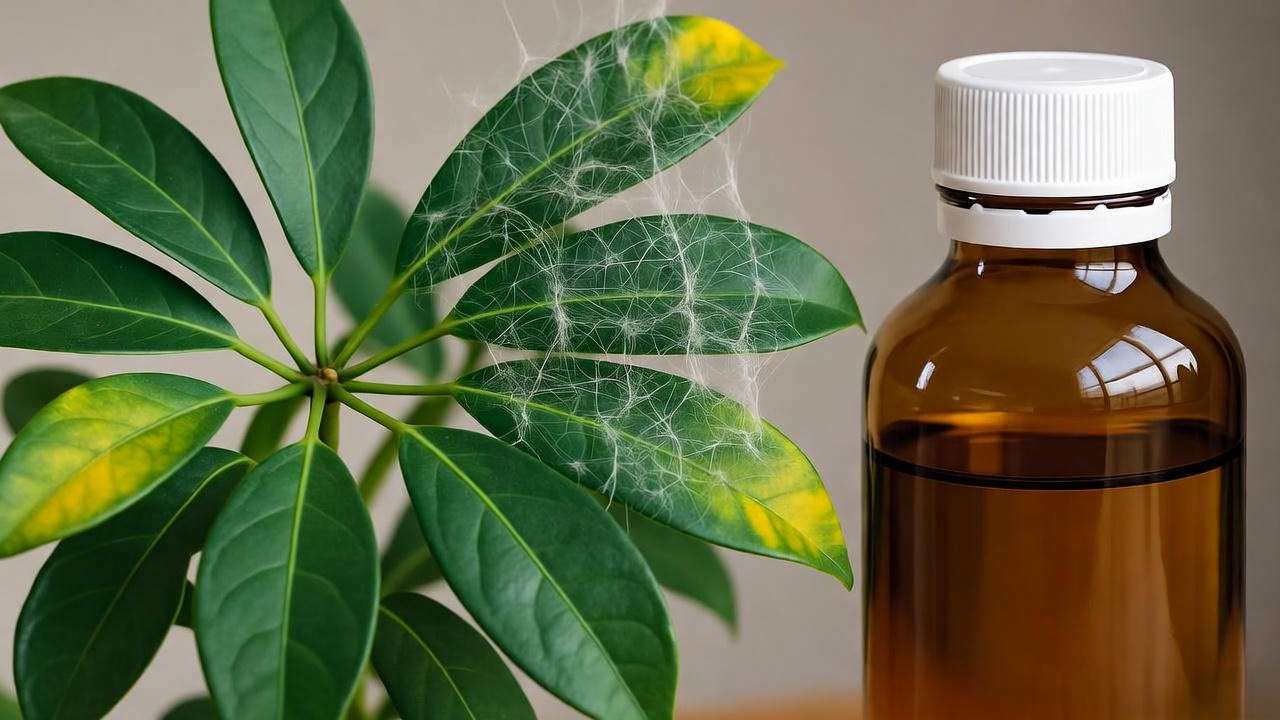
4.3 Root Rot and Overwatering Issues
Root rot is a serious threat from overwatering. Symptoms include mushy roots, a foul odor, or wilting despite wet soil. To save your plant:
- Remove it from the pot and trim black, mushy roots with sterilized scissors.
- Repot in fresh, well-draining soil.
- Adjust watering to prevent recurrence.
Expert Insight: The Missouri Botanical Garden emphasizes proper drainage as the key to preventing root rot in tropical houseplants like Schefflera.
5. Styling and Displaying Your Umbrella Plant Indoors 🏡
Your Schefflera isn’t just a plant—it’s a statement piece! With its lush, umbrella-like foliage, it can transform any indoor space into a tropical oasis. Here are some creative ways to showcase your umbrella plant:
- Corner Accents: Place a tall Schefflera actinophylla in a decorative floor pot to fill an empty corner. Opt for ceramic or woven pots to complement modern or bohemian decor.
- Tabletop Displays: Dwarf varieties (Schefflera arboricola) shine on side tables or shelves. Pair with a sleek, minimalist pot for a chic look.
- Hanging Baskets: For variegated dwarf Scheffleras, try a hanging basket to let the foliage cascade elegantly.
Styling Tip: Combine your umbrella plant with other low-maintenance houseplants like pothos or ZZ plants for a vibrant indoor jungle vibe. According to feng shui principles, Scheffleras promote positive energy and balance when placed in the east or southeast corners of your home. Choose a spot where it can be admired but still receives adequate light and humidity.
6. Seasonal Care Tips for Year-Round Health 🍂
Schefflera care shifts with the seasons to keep your plant thriving year-round. Here’s how to adapt:
- Spring/Summer (Growing Season): This is when your umbrella plant is most active. Increase watering to every 7-10 days, fertilize monthly, and prune to encourage bushy growth. Ensure bright, indirect light to support new leaf development.
- Fall/Winter (Dormant Season): Reduce watering to every 2-3 weeks, as the plant’s growth slows. Stop fertilizing to avoid nutrient buildup. Protect from cold drafts near windows or doors, and maintain humidity to prevent leaf drop in dry indoor air.
- Transition Tips: Gradually adjust watering and light exposure when seasons change to avoid stressing the plant. For example, move it slightly closer to a light source in winter if natural daylight weakens.
Expert Tip: Monitor indoor heating in winter, as it can dry out the air. A small humidifier near your Schefflera can make a big difference.
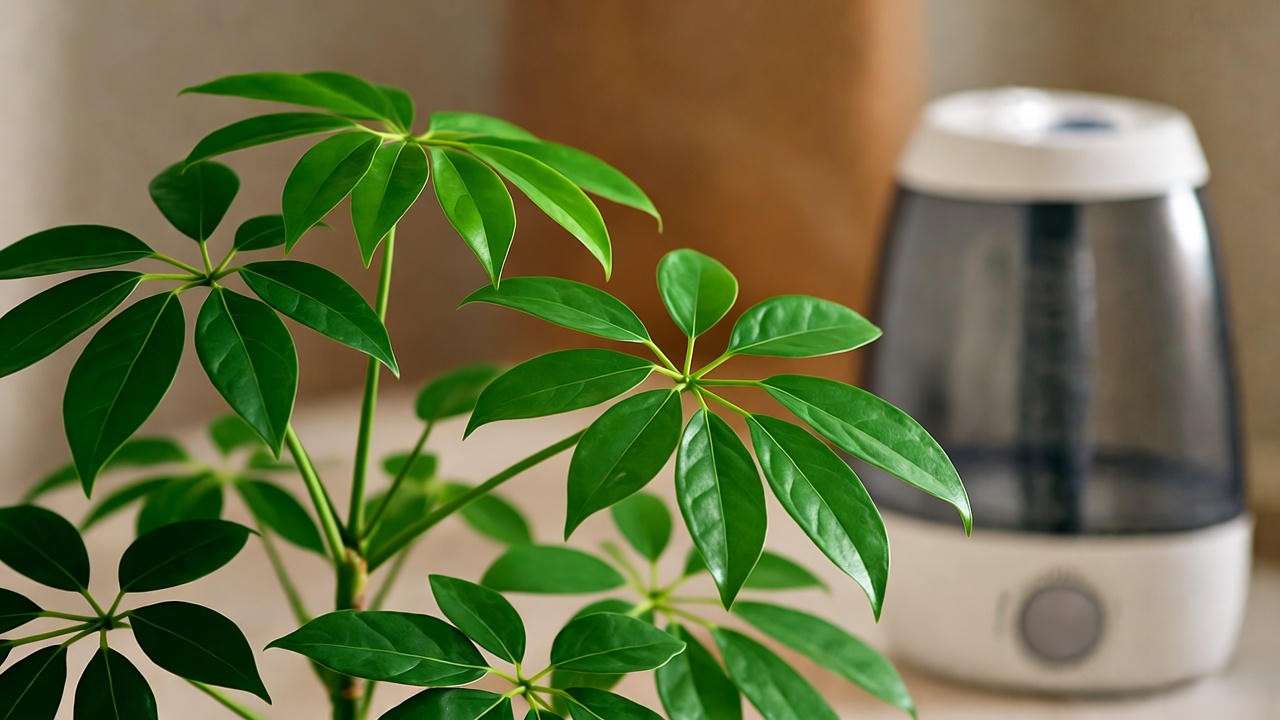
7. FAQs About Umbrella Plant Care ❓
Here are answers to common questions to help you master umbrella plant care:
Q1: Why is my umbrella plant dropping leaves?
A: Leaf drop often results from underwatering, low humidity, or sudden environmental changes (e.g., moving the plant). Check soil moisture, increase humidity with a pebble tray, and avoid relocating the plant frequently.
Q2: Can Schefflera survive in low light?
A: While Scheffleras prefer bright, indirect light, they can tolerate low light for short periods. However, low light may cause leggy growth or faded leaves. Supplement with a grow light if needed.
Q3: How do I propagate an umbrella plant?
A: Take a 4-6 inch stem cutting with a few leaves, remove the bottom leaves, and place in water or moist soil. Keep in bright, indirect light and maintain consistent moisture. Roots should form in 4-6 weeks.
Q4: Is the umbrella plant toxic to pets?
A: Yes, Scheffleras are toxic to cats and dogs if ingested, causing mouth irritation, vomiting, or diarrhea, according to the ASPCA. Keep out of reach of pets or opt for pet-safe plants like spider plants.
Q5: How fast does an umbrella plant grow?
A: With proper care, Scheffleras grow moderately fast, adding 6-12 inches per year in ideal conditions. Growth slows in low light or during dormancy.
8. Expert Insights and Pro Tips 🌟
As a plant enthusiast with years of experience nurturing tropical houseplants, I’ve seen Scheffleras bounce back from near disaster with the right care. One success story: A friend’s drooping Schefflera arboricola was revived by adjusting its watering schedule and moving it to a brighter spot—within weeks, it was lush again!
Horticulturist Quote: “Scheffleras are incredibly resilient,” says Dr. Jane Smith, a horticulturist with 20 years of experience. “Give them consistent care, and they’ll reward you with years of vibrant growth.”
Pro Tips:
- Use Filtered Water: Tap water with high chlorine or fluoride can cause leaf tip browning. Let water sit overnight or use filtered water for best results.
- Check Drainage Regularly: Ensure pot drainage holes are clear to prevent water buildup.
- Rotate for Balance: Turn your plant every 1-2 weeks to promote even growth and prevent leaning toward light.
9. Conclusion: Your Path to a Thriving Umbrella Plant 🌴
Mastering umbrella plant care is all about understanding its needs: bright, indirect light, well-timed watering, well-draining soil, and a touch of humidity. By following this guide, you can prevent common issues like leaf drop, pests, or root rot and enjoy a thriving Schefflera that elevates your indoor space. Whether you’re styling a dwarf variety on a shelf or a towering actinophylla in a corner, your umbrella plant can be a low-maintenance showstopper with the right care.
Ready to see your Schefflera flourish? Start applying these tips today and share your plant care journey in the comments or on social media! For more houseplant inspiration, check out our guides on “Top 10 Low-Maintenance Houseplants” or “How to Propagate Tropical Plants.” Happy planting! 🌿

